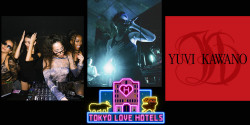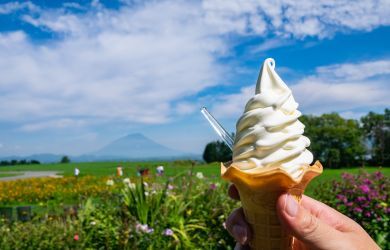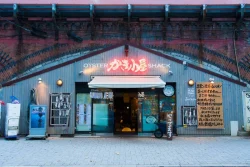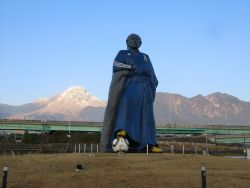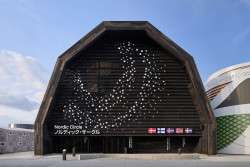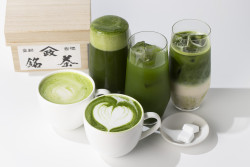
August 16, 2013
Writing To Write Home About
A rare survey of Japan’s finest calligraphy at Tokyo National Museum
By Metropolis
Originally published on metropolis.co.jp on August 2013
To spend a summer afternoon in the gloomy confines of the National Museum studying centuries-old fragments of text might sound like a very dry day off indeed. Yet “The Beauty of Japanese-Style Calligraphy” manages to transform a subject that could have been the preserve of experts-only into a vibrant celebration of the beauty of written script. Even if you can’t read a single character, this exhibition promises to inform and delight in equal measure.
The vast 156-object display is curated with excellent narrative clarity. From the first import of China’s writing system to Japan in the early centuries AD to the point when wayou (Japanese-style) calligraphy had grown to flourish with an aesthetic sense entirely its own, we are shown how an appreciation for writing as art in itself has led to calligraphy attaining near-sacred significance. As Japanese scholars altered early kanji to form the syllabic system now known as kana in the Heian period (794-1192), they were simultaneously refining the Chinese writing style. We can see the difference in a work like Poems of Bai Juzi by the master Fujiwara no Koyei, which is characterized by a gentle brush pressure and delicate treatment of line that sets it apart from its mainland predecessors.
The show balances serious academic scrutiny with an enjoyment of the sheer wealth of beauty in in these objects. This is especially true of works from the later Edo period (c. 1600-1868), by which point nostalgia for classical culture led to the concept of kohitsu (calligraphy classics), enthusiastically collected and displayed in private homes and at tea ceremonies. In such an atmosphere of conscious appreciation, contemporary calligraphy pieces like those by Hon’ami Koetsu freely combine text and image with the primary purpose of sophisticated visual pleasure. In Hon’ami’s text of a waka poem (itself an art form dependent on the development of written script), extravagantly large characters are delineated in varying intensity over a floral painted motif. The loose, flowing brushstrokes are painted in consciously rhythmic fashion across the space of the scroll, making them part of the overall composition as much as the soft touches of leaves and petals that they interlock with.
But perhaps the exhibition is most interesting for what it reveals about calligraphy’s relevance to the wider scope of Japanese history. Of course, the art of shodou (literally “the way of the brush”) is as much part of Japan’s cultural heritage as ikebana or the tea ceremony. Yet it has played a role in everything from politics (as we see in the private letters of Edo shogun Tokugawa Ieyasu) to faith. The fan-shaped albums of the Lotus Sutra (circa 12th century; pictured) are a stunning example of the latter. At that time it was believed that the degeneration of mappo (Buddha’s law) was imminent, and the only way to avert it was through sheer strength of prayer. Devout Japanese Buddhists vied to express their piety in ever more extravagant ways, of which the patronage of lavishly decorated sutras became a key part.
This means that although the Lotus Sutra’s script combines a graceful fluidity of stroke with the exquisite coloring of the figurative image beneath, it should actually be seen in sum as a religious offering rather than a self-contained narrative. The underpaintings have no relation to the subject of the sutra writing itself. This only redoubles the point that even in this comparatively early period, calligraphy had transcended the function of communication to become a decorative form in its own right.
Arguably, one of wayou calligraphy’s joys is that we can see its delicate style reflected even in handwritten Japanese today. Yet the National Museum’s show makes a convincing case for its wider links with ideas of religious piety, aesthetic refinement and even, as the catalogue puts it, ”natural and national character.” Whether this verges on the overly patriotic is up to you to decide. Either way, in the Tokyo art world’s quiet summer season, this collection of treasures stands out as an unmissable opportunity.
Tokyo National Museum until Sep 8.



